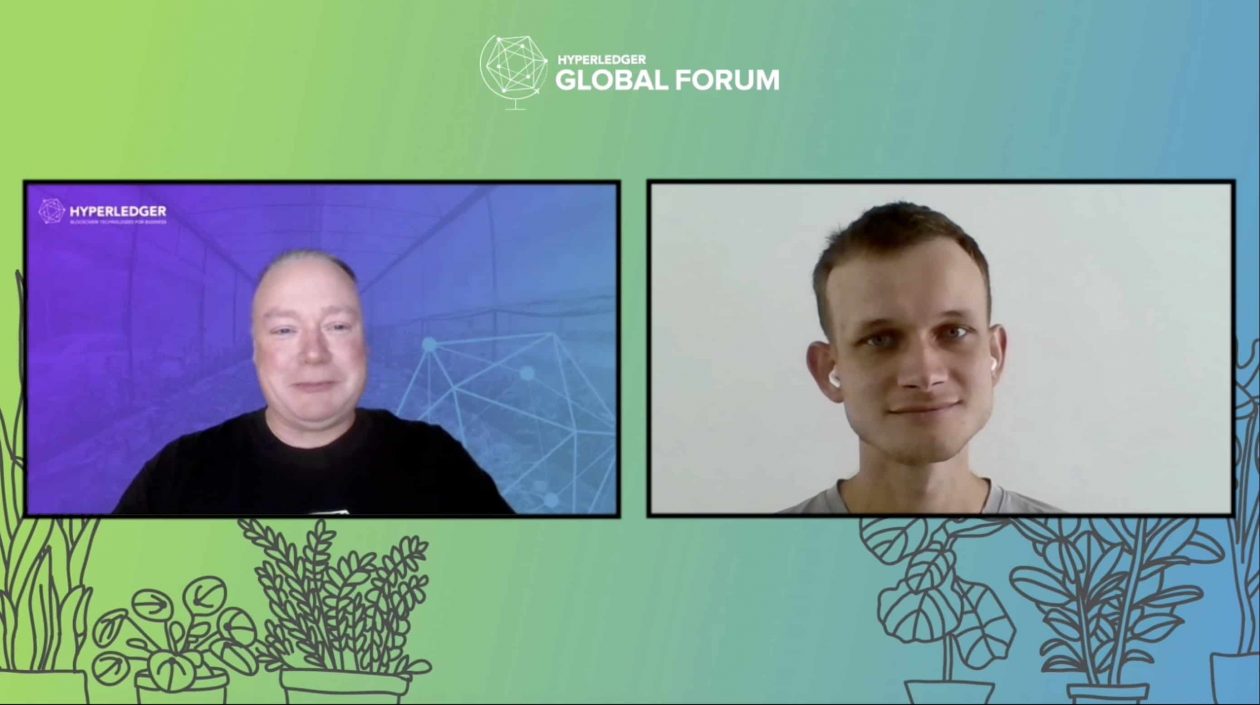Eth2 will bring scalability and help open the door to more decentralized applications and enterprise use cases, said Ethereum’s creator and co-founder Vitalik Buterin at the Hyperledger Global Forum 2021, an enterprise blockchain event, taking place this week.
“Our vision in Ethereum has always been to be this platform that’s open to all these different applications where the limit is just your creativity,” Buterin said. “But if in practice, just the economics make it so it’s only viable to do a few things, then in some ways that’s a big limitation on how much of our mission we could actually accomplish.”
Buterin was speaking at a fireside chat with Brian Behlendorf, executive director of Hyperledger, an open source collaborative effort hosted by The Linux Foundation, created to advance cross-industry blockchain technologies.
Addressing Ethereum’s scalability issues
Alongside decentralized finance’s (DeFi) explosive growth on Ethereum, transaction costs (gas fees) have skyrocketed and scalability has been an issue. “Right now, transaction fees are high… it prices out users,” Buterin said.
See related article: Report: 1.7 million DeFi users now on Ethereum, 50% more since Jan. 1
Work to make Ethereum more scalable, secure and sustainable has been underway since 2014 — even before the blockchain platform’s official launch in July 2015.
Eth2 upgrades are taking place progressively. The Beacon Chain upgrade, implemented in December, marked the first of the Eth2 upgrades and brought staking to the Ethereum ecosystem. “The Merge” — Ethereum mainnet’s merge with the Beacon Chain’s proof-of-stake system — will mark the end of a proof-of-work Ethereum and is scheduled to take place later this year or next year.
Sharding, a multi-phase upgrade to improve Ethereum’s scalability and capacity through the use of shard chains to spread the network’s load across 64 new chains, is planned to follow in 2022, after The Merge.
Speaking at the Virtual Fintech Forum at the StartmeupHK Festival 2021 in May, Buterin said building Ethereum was taking more time than he anticipated.
“We thought it would take one year to do the proof of stake, but it actually takes six years,” he said.
Ethereum’s next major upgrade — London — scheduled to take place next month, will incorporate the EIP-1559 on fee market change, which is expected to reduce Ethereum transaction fees and add deflationary pressure to the supply of Ether.
At the Hyperledger fireside chat, Buterin said layer 2 solutions like rollups have also come to the fore. Rollups execute transactions outside the main Ethereum chain (layer 1), but post the transaction data on layer 1, resulting in lower fees for users and improves the blockchain’s throughput. At the same time, sharding will improve scalability by reducing network congestion and increase transactions per second by creating new chains, or “shards.”
“So sharing times a hundred, rollups times a hundred, the two multiplied times ten thousand. And the hope is that you can simultaneously make the platform able to handle more users and reduce transaction fees,” Buterin said.
See related article: Ethereum’s Berlin upgrade goes live. What’s next for Ethereum?
Building public blockchains
Noting that there were groups building public blockchains for enterprises, Buterin said, “We should have an ecosystem where the enterprises and everyone, they can just all live together and the ecosystems can kind of plug into each other and benefit each other much more.”
“But the challenge is that if you want anyone to be building on the public chain then, the transaction fees have to go down and then also privacy issues have to be solved,” Buterin said. “And that’s like the other benefit… you have all of these very diverse, different groups just building and working on this technology and everyone can just use each other’s stuff ideally. So I’m optimistic about that future.”
Transition from proof-of-work to proof-of-stake
On Ethereum’s upcoming transition from a proof-of-work to proof-of-stake consensus mechanism, Buterin said it was “a big motivation” that Etherum’s resource requirements as a whole will reduce by more than a thousand times. At the same time, there was no need to have a trade-off on the supply of coins and the security of the network. “It’s good for the Ethereum community and good for the users, good for the world, it’s always great when things line up that way,” Buterin said.
Fostering the Ethereum community
In terms of having a good open-source community to foster the development of Ethereum, Buterin said that the ecosystem needed to be “one that’s open and welcoming.”
“Not everyone that might want to contribute speaks English,” said Buterin, adding that “trying to engage with all of the local communities is something that we have valued and really tried to do for a long time.”
“It’s an open platform and people can just go and build their own interesting and amazing things,” Buterin said.
See related article: Vitalik Buterin speaks: What lies in the future of Ethereum?






